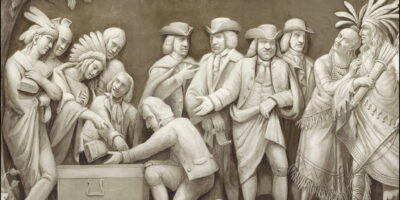Five Great and Recent Books on Economic History

The field of economic history is a hard one to dabble in. It requires the assembly of rich and complex data from the past. Unlike modern statistical series, there are no “user guides” for economists and historians who deal with past data. One must simply absorb large quantities of detail to make things as simple as possible. As such, books in economic history are long in the making and generally assemble many years of research. For that reason, it is worth highlighting some recent books (published in 2018 and 2019) that are worth having in your library.
J.G. Manning. 2018. The Open Sea: The Economic Life of the Ancient Mediterranean World from the Iron Age to the Rise of Rome. Princeton, NJ: Princeton University Press.
A professor of classics at Yale University, Joseph Manning is no ordinary classicist. Akin to other scholars of antiquity like Josiah Ober, Alan Bowman and Walter Scheidel, Manning is well-versed in economic theory. As such, he is able to link rich archaeological evidence and textual sources to theoretical constructs that expand the range of interpretations that can be made about ancient economies while also increasing the certainty of existing interpretations.
Many things come out clear from the Open Sea. The main one is that the pattern of mild economic growth from the late 800 BC to circa 100 CE that used to be approximated by shipwreck data seems confirmed. Manning depicts a clear portrait of rising living standards during a few centuries by assembling the vast literature on the topic. During those centuries, it seems that Malthusian pressures (i.e. pressures imposed by population levels) were offset by Smithian gains (i.e. gains by specialization permitted by larger markets and economies of scale). While the final departure from Malthusian pressures occurred much later (at sometime between the 16th and 18th centuries), this temporary escape constituted an era of (by the standards of the time) rapid economic growth. Rough estimates suggest that classical Greece experienced growth of per capita income of 0.15% per year while the Roman Empire (up to the arrival of the Antonine plague) enjoyed growth rates equal to 0.1% per year. This may appear modest, but this needs to be contextualized by the fact that populations rose importantly during these eras. Normally, rising population levels are believed to be accompanied by falling income per capita. Finding rising income per capita and rising population is in itself a tremendous finding that Manning cements with qualitative and quantitative sources.
The second element that comes out clearly is a historian’s embrace of economic logic. Frequently, in works of classical history, irrationality or pre-capitalist mentalities are assigned to individuals. This often amounts to a statement that economic “mentalities” were not the same as today. Many historians (and economists) have rejected this view, but it comes out clearly in Manning’s work. Within their constrained environment, farmers and workers of antiquity behaved as economic theory would predict. The only thing we must do, and which Manning does well, is explain the constraints that mattered to economic actors.
Manning’s book is worth reading as the main “advanced” introduction to economic history of the Ancient Mediterranean.
Kyle Harper. 2017. The Fate of Rome: Climate, Disease & The End of an Empire. Princeton, NJ: Princeton University Press.
While Manning’s book is largely concerned with a period of increasing living standards (but not exclusively), Kyle Harper’s The Fate of Rome deals with the decline in living standards after 200 CE. However, Harper takes a heavy focus on health, nutrition and mortality to tackle the long decline of the Roman Empire.
In essence, Harper structures his argument around a mixture of exogenous and endogenous changes. The timing of the Roman Empire’s rise was fortuitous in that it coincided with a warmer period that increased the frontiers of production possibilities. In combination with the market integration that occurred around the Mediterranean basin, this allowed the Roman Empire’s population to swell. However, this population increase carried with it the seeds of its own demise. If the climate became colder (thereby reducing growing seasons, yields and the range of arable lands), nutritional stress would emerge. As a result, populations would be more vulnerable to diseases. Simultaneously (but independently), the Empire’s growing density meant diseases could also spread more easily to more vulnerable populations. In essence, “the empire’s fetid cities” gradually became “petri dishes for low-level intestinal parasites.”
The argument is simple and has strong theoretical foundations in what is known as the Preston Curve. Named after sociologist Samuel Preston, the curve posits a positive (but marginally decreasing) relationship between material well-being and health outcomes (most often proxied by life expectancy). The curve is hotly debated across many fields (from epidemiology to economics). The reason for the debate is that the curve need not have the same gradient and shape over time. Changes in the environment, medical knowledge or new diseases can alter things. This was notably the case during the antebellum era in the United States. As the country urbanized and industrialized, workers moved to dirty cities. While wages were higher in cities than in the countryside, life expectancy at birth was inferior. Eventually, cities invested in public health structures and medical knowledge increased. However, for a time, there might have been an upward trend in wages and incomes but a downward trend in biological living standards (I say “might” because this is debated).
The same logic applies to the Roman Empire (even though Harper did not frame it as such). The Roman Empire created a trade network on the Mediterranean that improved material living standards (see Manning above). It also increased biological living standards. However, that network came with a trade-off. After a certain point, the gains from extra income would be offset by losses on the health dimension. The issue is that this trade-off’s future costs were unknown to populations unfamiliar with germ theory, principles or epidemiology etc. Once the tip-off point was reached, Rome was forced on a different (and lower) Preston curve.
Diseases weakened the empire’s capacities by killing off large pools of potential soldiers. While Harper only mentions this briefly, the Romans died in greater proportions than the external enemies of Rome (probably in part because of lower population densities). This was only heightened in the Late Antique Little Ice Age which further weakened the empire. Colder temperatures reduced the resources of the vestiges of the Roman Empire (in the form of the Byzantine empire). The institutional structures of the Empire, which were somewhat rigid in Harper’s telling, were unable to adapt easily.
All of this narrative that mixes climate science, epidemiology, economics and classic amounts to a potent explanation of the decline of the Roman Empire. As a companion to Manning’s Open Sea, Kyle Harper’s Fate of Rome provides one with the basic tools needed to start studying the economic and political history of antiquity.
Jason Taylor. 2019. Deconstructing the Monolith: The Microeconomics of the National Industrial Recovery Act. Chicago, IL: University of Chicago Press.
The provision of a convincing explanation for the depth and duration of the Great Depression in America is one of the most alluring prizes in the field of macroeconomics. Countless works of great quality have been dedicated to the topic. A subset of the field has been concerned with studying the National Industrial Recovery Act (NIRA) that was adopted in 1933. The NIRA is an oddity. By legally inciting firms to collude by setting codes of practices, it constituted a piece of legislation that encouraged cartelization. By definition, this would reduce output and increase prices. As such, it is often accused of having delayed recovery.
However, economist Jason Taylor points to a flaw in the existing research: most of the research takes NIRA as a one-size-fits-all. There are no reasons to do so. While it was a single piece of legislation, the law actually permitted industries to come up with their own codes. Some industries came up with codes of practice that are clearly not too restrictive while others were incredibly restrictive. Taylor argues that it is unwise to bundle it all together because variations at the micro-level can be instructive for macro-events.
Taylor provides a rich and detailed explanation of the motivations and structure for the Act before measuring (and coding) differences between the codes of practices. This allows him, in chapter 8, to test the importance of the codes on output. Taylor points out that, when the Supreme Court struck down the NIRA with the Schechter decision in May 1935, there was a mild economic recovery in the United States. The cause (and existence) of that recovery has been debated, but Taylor uses his industry-level data in a way that could end the debate. By arguing that heterogeneous codes will have heterogeneous effects on output, the abolition of these codes will not affect output evenly across industries. He finds that the industries that had the most restrictive codes experienced output growth twice as fast as the industries with simpler codes. Given that the adoption of the NIRA coincided with a reversal of a previous recovery that had started in 1933, Taylor’s argument about post-1935 growth ought to provide final resolution to this conversation.
While it appears narrow at first glance in terms of its topic, the book actually constitutes a great introduction to the economic history of the Great Depression. Given its price, it could act as a strong companion to other books such as Milton Friedman and Anna Schwartz’s chapter on monetary contraction of 1929-32 in the Monetary History of the United States as well as Gene Smiley’s Rethinking the Great Depression.
Noel Johnson and Mark Koyama. 2019. Persecution and Toleration: The Long Road to Religious Freedom. Cambridge: Cambridge University Press.
Religious toleration is seen as an Enlightenment virtue. It is virtuous to tolerate those who differ in spirituality. However, it would be somewhat childish to believe that mankind only began to become “virtuous” in the 16th century and only in a few portions of the globe. Noel Johnson and Mark Koyama share that belief and propose a “baser” explanation for the rise of religious toleration: it was in the self-interest of rulers.
To make this case, Johnson and Koyama rely heavily on a fact that is not well-known to the general public. A common depiction of religious toleration is that during the Middle Ages, persecution was rampant. That is untrue. Violence, while it did occur, was episodic only.
The small and numerous polities of the Middle Ages often tolerated religious minorities but they did in a myriad of different manners. For example, Jews in the 15th and 16th centuries in Frankfurt were legally inferior to Christians. However, local elites granted them legal rights to manage their own communities and also arranged for an exchange of rents. Monopoly rights over the money-lending market were conferred which allowed returns above normal market returns. A part of those returns was shared with the rulers. While these sorts of arrangements were not amenable to long-term economic growth, they did provide a modicum of peaceful religious coexistence. This peaceful coexistence was only threatened when exogenous shocks like crop failures caused political backlashes against local elites. In such cases, rulers abandoned their pledges of protection and they scapegoated religious minorities in order to preserve their political interests.
However, the key condition for this weak form of toleration is that local rulers must be weak in their capacity to rule. By “weak”, Johnson and Koyama mean that the administrative capacities of the state were limited. To extract revenues, rulers of small kingdoms (e.g. Denmark) or city-states (e.g. Venice) could not create elaborate tax bureaucracies. Creating monopoly rights for certain interest groups (e.g. the money-lending example above or crafts guild) in exchange for a share of the extra profits was one of the alternatives in order to raise revenues. This weak ability to extract revenues correlates with the (in)ability to control religious violence.
The departure from this equilibrium to one of more generalized toleration (with an interlude of violence) stemmed from changes in the optimal size of nations. Changes in military technologies made it easier to field large armies. In fact, there was an advantage in fielding larger armies because of economies of scale. The change in the cost structure of public goods made it possible to create larger polities. The downside is that larger polities meant more heterogeneous populations and a greater scope for conflicts and tensions within nations. The localized forms of religious toleration that had existed could not be sustained on the scale of nations.
However, rulers were still utility-maximizers according to Johnson and Koyama. They merely changed the manner in which they maximized. The ability to construct large bureaucracies with some economies of scale meant that it was easier to replace all the localized forms of religious toleration with a centralized “one-size-fits-all” toleration. That toleration was not motivated by Enlightenment values but rather by the fact that it was costly for rulers to try to enforce religious conformity. Better adopt some forms of toleration (like that of the Catholics of Britain or the Protestants of France) where the minorities would enjoy lesser rights but still be “endured” (i.e. tolerated). Thus, toleration was self-interested and in no way “enlightened.”
Johnson and Koyama’s Persecution and Toleration is a great work of economic history and political history. In fact, it cements the case that toleration spawned enlightenment values rather than the reverse. Simply for this reason, it ought to have a place in one’s library.
Sheilagh Ogilvie. 2019. The European Guilds: An Economic Analysis. Princeton NJ: Princeton University Press.
Guilds have long been scorned. The word “guild” has come to be associated with cartelization with state sanction to restrict entry. And as cartels restrict output to raise prices, they are de facto detrimental to consumer welfare and economic development.
For long, the consensus within the field of economics was inherited directly from classical economics with very few additions or subtractions. Thus, guilds – especially those of the medieval period – have long been judged with contempt by scholars.
However, some economists later revisited the topic with the light of new theoretical developments. Guilds, so these economists argued, could have been beneficial to economic development if they resolved a market failure of some sort. Some argue that they served to constrain rulers and secure property rights. Others argued that they resolved problems of asymmetric information with regards to product quality. Others argue that the monopoly rights they received allowed them to produce public goods that would not have been produced otherwise.
These arguments are relatively novel. They are also theoretically sound. How can this be? If two theories clash with each other, they are not necessarily false. They may even be equally applicable to a particular question. However, one can have more explanatory power than the other theory. Applied to the case of medieval guilds, this would mean that while guilds may have resolved some market failures which improved economic outcomes, they may also have caused more harm than good. Or the reverse. The answer is a purely empirical one and can only be answered by doing the dirty work of historical research.
The dirty work is what Sheilagh Ogilvie commits herself to delivering in The European Guilds: An Economic Analysis. Ogilvie, an economic historian at Cambridge University, has long been invested in the debate on the effects and consequences of guilds. Unsatisfied with the deadlock that had emerged between the revisionists and those who steered closer to the classical view, Ogilvie assembled a rich database of quantitative and qualitative information about guilds across Europe. Everything from membership and operational structures to fees and political behavior. All this for 22 countries over 8 centuries.
While there are still some questions to answer, Ogilvie settles many questions permanently. First, while it is hard to know whether or not guilds did serve an efficiency rationale when they first appeared, they rapidly became rent-seeking entities. Guilds invested considerable resources in lobbying to obtain (and preserve) favours from political elites. Such lobbying efforts are generally indicative of important transfers towards the politically connected group. This element alone suggests a high plausibility that guilds were causing more harm than good. Second, the data she amassed allowed her to measure the “strength” of guilds.
This is an incredible progress because guild membership, a commonly-used metric, does not speak to how powerful the guild was. When one compares economic performance with guild membership, the results are unclear. However, when one compares with guild strength (which is what Ogilvie does), one finds that areas with weak guilds were richer and enjoyed faster growth. This further reinforces the claim that guilds were, on net, detrimental.
Ogilvie’s work does not close the conversation for good. But it comes close and it clearly sets the stage for those who are willing to do the last push for a final resolution. It also sets the bar high in terms of doing historical work. Indeed, Ogilvie’s book constitutes the gold standard of historical methods – going to the archives to create data from scratch to resolve long-lasting debates. At the very least, budding economic historians and economists uninterested in guilds should use the book as a template on how to perform historical research.










